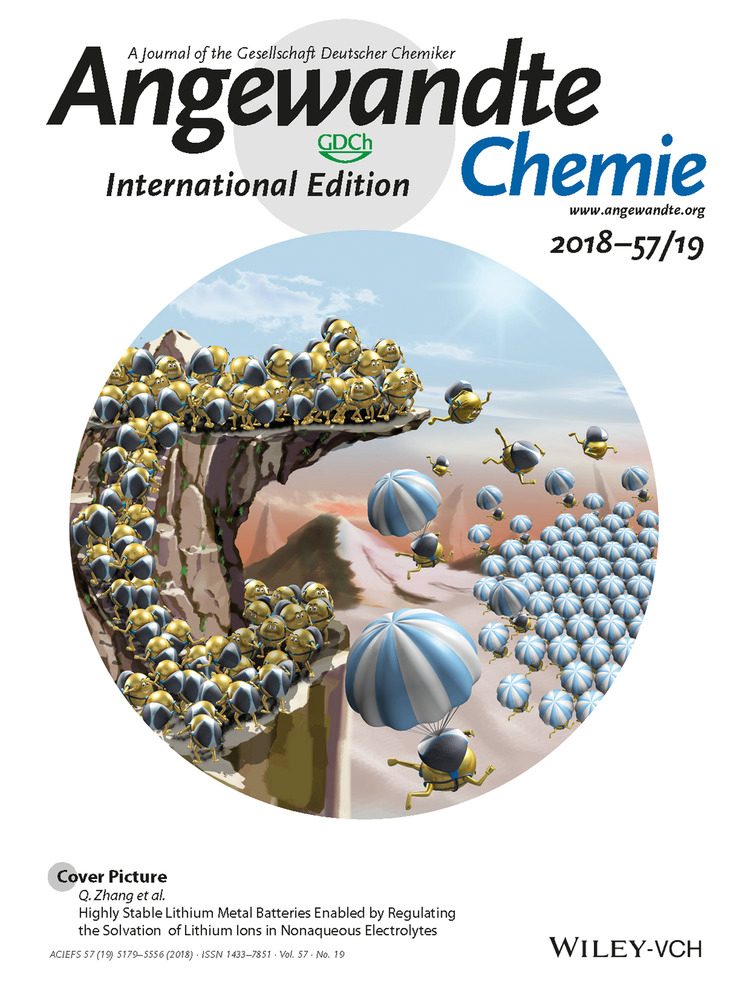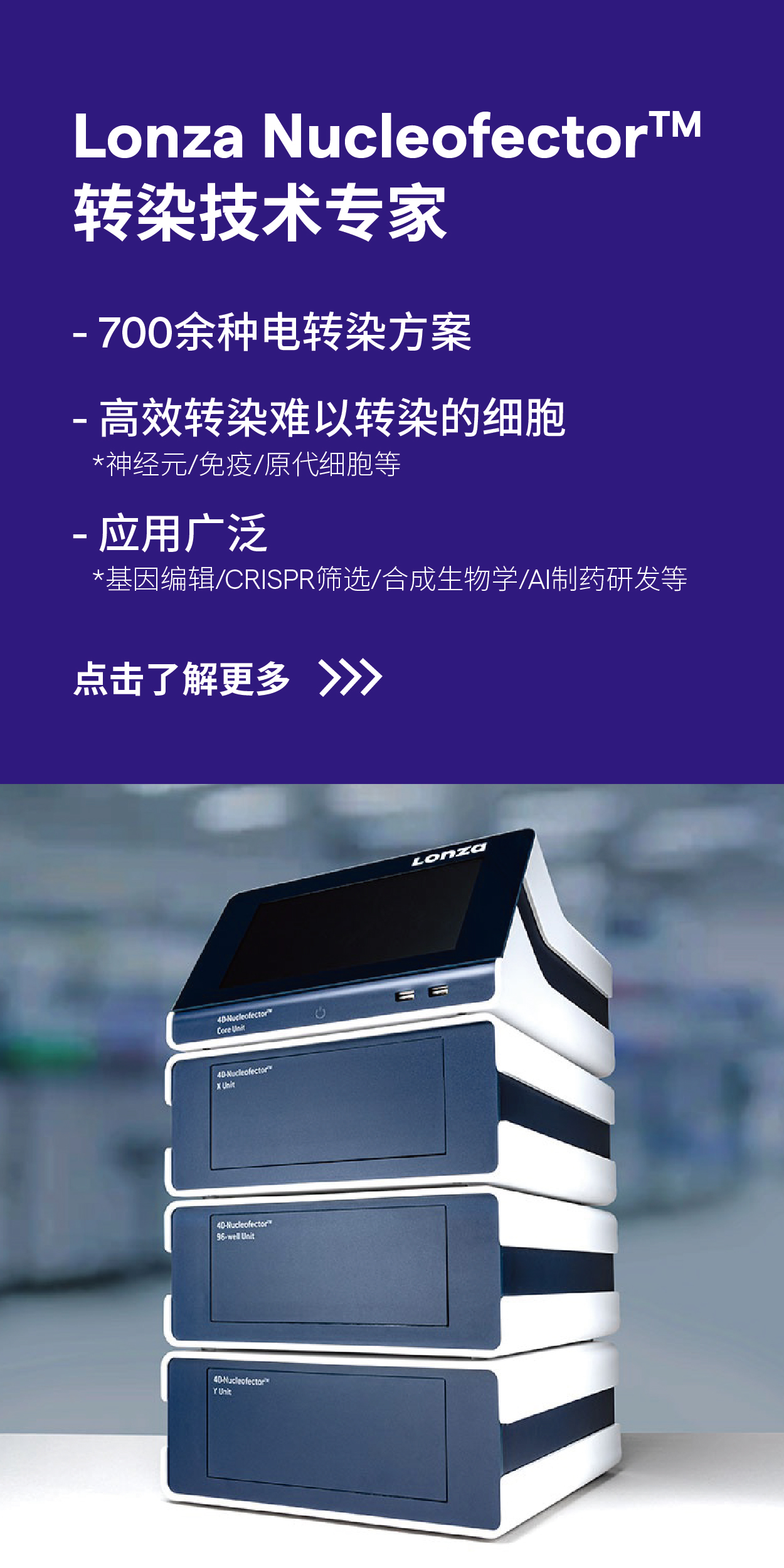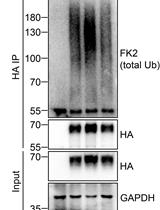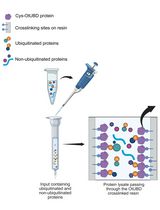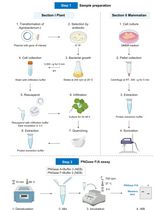- EN - English
- CN - 中文
Quantitative Irreversible Tethering (qIT) for Target-directed Covalent Fragment Screening
用于靶标定向共价片段筛选的定量不可逆系链(qIT)
发布: 2020年12月20日第10卷第24期 DOI: 10.21769/BioProtoc.3855 浏览次数: 3239
评审: Joana Alexandra Costa ReisManish Kumar PatelSneha Ray
Abstract
Small molecules that react to form covalent bonds with proteins are widely used as biological tools and therapeutic agents. Screening cysteine-reactive fragments against a protein target is an efficient way to identify chemical starting points for covalent probe development. Mass spectrometry is often used to identify the site and degree of covalent fragment binding. However, robust hit identification requires characterization of the kinetics of covalent binding that can be readily achieved using quantitative irreversible tethering. This screening platform uses a non-specific cysteine-reactive fluorogenic probe to monitor the rate of reaction between covalent fragments and cysteine containing biomolecules. Fragment libraries are simultaneously screened against the target protein and glutathione, which functions as a control, to identify hit fragments with kinetic selectivity for covalent modification of the target. Screening by quantitative irreversible tethering accounts for variations in the intrinsic reactivity of individual fragments enabling robust hit identification and ranking.
Keywords: Covalent fragments (共价碎片)Background
Site-directed ligand discovery was first reported in 2000 and utilizes surface-exposed cysteine residues to covalently trap disulfide-linked fragments that bind at an adjacent pocket (Erlanson et al., 2000). Since then, irreversible cysteine-targeting inhibitors have grown immensely in popularity and now represent front-line therapies in multiple oncology indications, with notable examples targeting BTK and EGFR as well as previously undruggable targets such as KRAS(G12C). Following these developments, covalent fragment-based ligand discovery has emerged as an efficient route towards the design of target-specific covalent inhibitors (Resnick et al., 2019). Libraries of cysteine-reactive fragments are now commercially available from a range of compound vendors and utilize a variety of reaction types for covalent bond formation such as conjugate addition and nucleophilic substitution. Protein mass spectrometry was adopted early on as a useful assay for conducting covalent fragment screening, providing a direct readout on the extent and the site of fragment binding. However, even the earliest reports of covalent fragment-based ligand discovery emphasized the challenge that fragment-dependent electrophilicity presents (Nonoo et al., 2012): the intrinsic reactivity of covalent fragments can vary by several orders of magnitude within a library. Fragments with high intrinsic reactivity will covalently bind to proteins regardless of their structure and this reactivity-driven binding does not constitute a useful starting point for fragment optimization. In pioneering work by Statsyuk, it was demonstrated that, through careful design of the reactive warhead architecture, it is possible to limit the variations in intrinsic reactivity, resulting in more robust screening outcomes (Kathman et al., 2014). However, in many cases it is desirable to screen a wide variety of warhead structures, maximizing the exploration of chemical space and enlarging the pool of accessible targets (Keserű et al., 2016).
Quantitative irreversible tethering (qIT) is a plaform for screening cysteine-reactive fragments that has been designed to overcome the intrinsic reactivity problem (Craven et al., 2018). The fluoregenic probe CPM (7-diethylamino-3-(4'-Maleimidylphenyl)-4-Methylcoumarin) is used to quantify the rate of reaction between covalent fragments and cysteine residues. Covalent fragments are simultaneously screened against glutathione (GSH) as well as the target protein and the rates of reactions (kobs) determined in high-throughput. GSH functions as a control cysteine containing biomolecule that lacks significant secondary structure. The rate of reaction between a fragment and GSH represents a measure of the covalent fragment’s intrinsic reactivity. Hit fragments are those that react significantly faster with the target protein than with GSH, as quantified by the rate enhancement factor (REF = kobs(target)/kobs(GSH). Screening by REF analysis ensures that qIT can be carried out in high-throughput and does not suffer from high false-positive/negative hit rates because it accounts for intrinsic fragment reactivity. The key advantage of screening by quantitative irreversible tethering is that, in accounting for intrinsic fragment reactivity, true hits can be readily distinguished from non-selective reactive molecules which otherwise lead to high levels of false positives. The platform is compatible with a broad range of cysteine-reactive fragments and is applicable to most cysteine-containing soluble protein domains. Additionally, the high-throughput nature and low cost of using a plate-based fluorescence readout means that quantitative irreversible tethering projects can be performed rapidly and with high efficiency.
Since the original publication of qIT (Craven et al., 2018), we have updated the screening protocol to make it more applicable to a wider variety of proteins by changing the buffer system, more high-throughput by reformatting from 96-well to 384-well format and easier to implement by changing the environment of operation from 4 °C to room temperature. In our lab we have successfully applied this updated protocol to a range of protein classes including kinases, GTPases, oxidoreductase and proteases.
Materials and Reagents
Black 384-well plates (Corning, 384-well low flange black flat bottom NBS, catalog number: 3575 )
Pippette tips for pipetting station (CyBio, SELMA 384/25 µl pipette tips (standard), catalog number: OL3800-25-513-N )
Plate sealing tape (Bio-Rad, optical sealing tape, catalog number: 2239444 )
384-Well compound storage plates (Nunc, catalog number: 269390 )
PD-10 column (GE Healthcare, catalog number: 52130800 )
15 ml Centrifuge tubes (Star Lab, Catalog number: E1415-0200 )
Reagent reservoirs (Thermo Scientific, catalog number: 8096-11 )
Immobilized TCEP agarose (Pierce, catalog number: 77712 ). Store at 4 °C (shelf-life ~1 month, soluble TCEP can be added to a final concentration of 50 µM to extend the shelf-life)
CPM: 7-diethylamino-3-(4'-maleimidylphenyl)-4-methylcoumarin (ThermoFisher, catalog number: D346 ). Store at 0.5 mM in DMSO at -20 °C in aliquots of 56 µl
L-Glutathione reduced (Sigma-Aldrich, catalog number: G4251 ). Store at 4 °C
Target protein–containing a single surface-exposed/reactive cysteine residue (cloning and expression by standard molecular biology protocols as required). See Note 1 for compatibility considerations
Control protein–this should be identical in sequence to the target protein but have the reactive cysteine knocked-out (cloning and expression by standard molecular biology protocols as required). Typically, the reactive cysteine is mutated to alanine or serine
Covalent fragment library (Compounds stored at 50 mM in DMSO in 384-well compound storage plates, 320 compounds per plate in columns 3-22, columns 1, 2, 23 and 24 are blank). See Note 2 for composition and storage considerations
Iodoacetamide (Sigma-Aldrich, catalog number: I1149 )
HEPES (Sigma-Aldrich, catalog number: H3375 )
Sodium chloride (Sigma-Aldrich, catalog number: S7653 )
(Optional) Argon gas (BOC, catalog number: 11Y )
DMSO (Sigma-Aldrich, catalog number: D8418 )
Reaction buffer (see Recipes)
Quench buffer (see Recipes)
CPM Quench solution (see Recipes)
3x TCEP agarose stock (1.5% suspension) (see Recipes)
3x GSH stock (15 µM) (see Recipes)
3x Target protein stock (15 µM) (see Recipes)
3x Control protein stock (15 µM) (see Recipes)
Equipment
Timer (Lab Alert, catalog number: HS24670 )
Single channel pipettes (Gilson)
12-Channel pipette (Sartorius, Picus electronic 10-300 µl, catalog number: 735461)
Plate reader (BMG LABTECH, model: CLARIOstar )
Semi-automated pipetting station (Analytik Jena, model: CyBio SELMA 384/25 µl)
Centrifuge with plate adapter (Ependorf, model: 5804R)
NanoDrop spectrophotometer (Thermo Scientific, catalog number: ND-2000)
Software
Microsoft Excel
GraphPad Prism 8
Procedure
文章信息
版权信息
© 2020 The Authors; exclusive licensee Bio-protocol LLC.
如何引用
Craven, G., Mann, D. J. and Armstrong, A. (2020). Quantitative Irreversible Tethering (qIT) for Target-directed Covalent Fragment Screening. Bio-protocol 10(24): e3855. DOI: 10.21769/BioProtoc.3855.
分类
生物化学 > 蛋白质 > 修饰
您对这篇实验方法有问题吗?
在此处发布您的问题,我们将邀请本文作者来回答。同时,我们会将您的问题发布到Bio-protocol Exchange,以便寻求社区成员的帮助。
Share
Bluesky
X
Copy link




